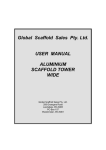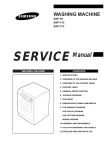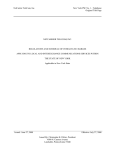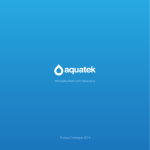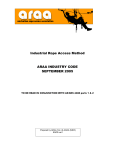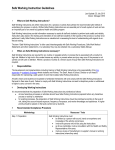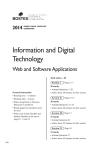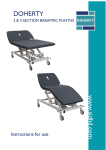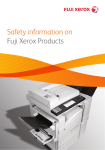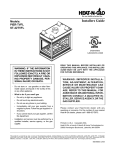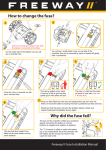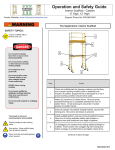Download User Manual - Aluminium Towers & Site Sheds
Transcript
Global Scaffold Sales Pty. Ltd. USER MANUAL SPEEDY/QUICK-PRO ALUMINIUM TOWER Global Scaffold Sales Pty. Ltd. 208 Gnangara Road Landsdale, WA 6065 PO Box 107 Westminster, WA 6061 Table of Contents Page 1. Design Information and Duty Ratings ................................................. 3 2. Storage & Maintenance ...................................................................... 3 3. Safety Instructions .............................................................................. 4 4. Access …………………………………………………………………….. 7 5. Transport ………………………………………………………………… 7 6. Safe Working Practice ........................................................................ 7 7. Additional Safety Accessories …………………………………………...8 8. Adverse Weather ................................................................................ 8 9. Dismantling ......................................................................................... 8 Disclaimer ................................................................................................... 8 Appendix A : Component List and Unit Weights Appendix B : Assembly Instructions 2 Global Scaffold Sales Pty. Ltd. Baby Tower Information & User Manual 1. Design Information and Duty Ratings: 1.1 - Scaffold Rating Light Duty 725mm wide frames - Maximum Height – 1.937mm - Maximum FREE Standing Height – ONE frame - Maximum number of work platforms – one - Maximum live load per working platform – 225 kgs Note: the live load duty ratings are as specified by AS/NZS 1576.3 : 1995 Appendix A,C,D and E AS/NZS 1576.1 : 2010 Scaffolding, Part 1: General Requirements 1.2 Identification All Speedy/Quick-Pro Scaffold Towers will have Safety Instructions and Assembly stickers with the company name and logo, attached to the frames of the scaffold tower. 2. Storage & Maintenance: 2.1 The Speedy/Quick-Pro Scaffold Tower must be stored off the ground and in an area away from corrosive substances. 2.2 While in storage the Speedy/Quick-Pro Scaffold Tower must be provided with suitable protection from mechanical damage. 2.3 When scaffold is not being used, it should be stacked in a neat and safe manner in a way that is not dangerous to others. 2.4 Scaffolding left in the weather, should be stacked in such a way so as not to collect rain water. 2.5 Report any damaged scaffolding to your employer or the owner of the scaffold for repairs or replacement. Stack damaged items separately. 2.6 Vertical tubes (standards) on scaffold frames should be cleaned regularly as they can become blocked with cement or other debris, which may obstruct the pins from going into the frames. 2.7 Any build-up of mortar and other materials must be cleaned off and toggle pins and hinges kept clean. 2.8 Carry out regular maintenance and inspection of hinges to ensure they are free of damage and operate freely. 2.9 All frames, braces and platform are to be inspected before use and any damaged items should be tagged “out of service”. 3 3. SAFETY INSTRUCTIONS These Safety Instructions must be present in the area of the Scaffold at all times. * Hang and store the Safety Instructions in the area of the Scaffold at a visible place for the user. * Always read these Safety Instructions of the Scaffold accurately before assembling the Scaffold and follow these Safety Instructions. * In case of questions on the safe functioning of the Scaffold, immediately contact the responsible parties or company concerned. It is restricted for unauthorized personnel to be in the area of the Scaffold. It is restricted for unauthorized personnel to make use of the Scaffold. * Always assemble the Scaffold as indicated by the manufacturer. * Never deviate or improvise while assembling the scaffold. Only use original delivered components to construct the Scaffold. * Always take preventive precautions so unauthorized persons or children cannot climb onto the Scaffold when used or not used. * Always take preventive measures so falling objects such as building refuse, materials, tools cannot damage or cause danger to persons. * Always ensure there is safe working area for the Scaffold. * Never use the Scaffold for purposes for which it is not meant for. * Never use the Scaffold if it is unstable. * Never use scaffold on soft ground. * Workers must not ride on scaffold when the scaffold is being 4 moved. At no time can a ladder be used on the deck of a scaffold to gain additional height – neither step nor extension ladder. * Hoisting machines may not be attached or used on the scaffold, unless this is explicitly indicated. *Always ensure the Scaffold is guyed to building or structure if the height exceeds 3 times its minimum base dimension or if any other circumstance is required for stability, or others stipulated by the producer. * Never use the Scaffold unless the original guardrails are fitted. * During activities on the Scaffold always wear correct personal protective equipment. * Take good care of the scaffold & keep it clean. Always inspect the Scaffold and all applications before use for any damages. If damaged do not use the Scaffold, do not take any risks. If in doubt always contact the responsible parties concerned. * Ensure that there is no building refuse falling or collecting on the scaffold. Immediately clean the refuse. * When climbing onto or descending the Scaffold only the delivered material for this activity must be used. Never improvise or deviate using other materials or methods. * Do not use the Scaffold in unsafe conditions such as extreme weather conditions. Unattended scaffolds must be secured so they are resistant against wind strength greater than 6 beaufort. * Never modify the Scaffold or its components in any way. * Never exceed a maximum weight of 225kg on the scaffold. * Never exceed safe maximum top working height. * Before starting the activities the users of the Scaffold must possess all the knowledge on the safe functioning of the Scaffold. * Before usage of the Scaffold check all the applications function. In case of doubt never take risks and always contact an expert. 5 * Always check the Scaffold for obstacles prior to use. Do not take any risks when removing obstacles. * Make sure, that there is always proper overview and that there are no visual obstructions during the use of the Scaffold. * Make sure there is proper lighting when activities are conducted with the Scaffold. * The use of the Scaffold, must always occur with complete consciousness * In case of abnormal symptoms occurring during use of the Scaffold, for example unstable situation, leave the Scaffold cautiously and contact an expert. * An authorized expert must always conduct repair activities on the Scaffold. * With the replacement of components of the Scaffold only original components may be used. * For cleaning of the Scaffold always use the prescribed cleaning liquid and material. * Report any unsafe conditions of the Scaffold to the responsible persons or the supplier. * Where scaffold is to be erected on canter levered support base it will be necessary to obtain an engineer’s acceptance of the loading that is intended. * A scaffold must not be erected within 4 metres of low voltage power lines, such as to a residence. Where it is necessary to erect a scaffold closer than 4 metres to low voltage power lines or where there is doubt of the voltage, do not proceed without written authority from the local power supply authority. Note: Victorian regulations require clearances of 4.6 metres horizontally and 5 metres vertically from the overhead wires. 6 4.Access 4.1 Never climb onto the scaffold platform from a ladder. 4.2 Face the side frame when climbing up or down, keeping the body centred in the frame. 4.3 Maintain a firm grip with both hands when climbing. 4.4 Do not overreach, move the scaffold when needed. 4.5 Do not ‘walk’ or ‘jog’ the scaffold when standing on it. 4.6 Do not stand, sit or climb on guardrails or outriggers 5.Transport: 5.1 The Speey/Quick-Pro Scaffold can be easily damaged during transport so care must be taken when arranging their loading and placement on the vehicle. The scaffold may be transported in either the vertical or horizontal position taking care to avoid any damage. 5.2 Note: Where suitable mechanical protection cannot be provided, top loading should be considered. 5.3 The Scaffold Tower should be properly secured to the vehicle during transport. 6.Safe Working Practice 6.1 Once the scaffold has been erected and accepted as a work platform, the users are responsible for using the scaffold in a manner that minimises risk to themselves and others. Your employer must ensure you have sufficient knowledge or experience to do so. 6.2 Any materials placed on scaffold should always be as close to the frames as possible. Make sure that such material cannot fall off the platform. 6.3 Any building debris and waste material should be progressively removed. Debris generated during use should be confined within the working platform. Working debris must not be allowed to fall from the working platform. Use chutes for debris or lower materials/debris by hoist. 6.4 Electrical leads or equipment used on scaffolding must be tagged with a recent date inspection tag confirming they are in good working order. 7 6.5 Where scaffold stands in close proximity to power lines, the handling of reinforcing steel rods and other long metal items should be carried in a manner that preserves the safe minimum distance of 4 metres from the power lines. 6.6 Scaffolding is made from Aluminium and is electrically conductive. Any faulty electrical equipment on the scaffolding could result in a fatal injury. 7.Additional Safety Accessories Provision has been made for the easy attachment of Handrails. It is always recommended for personal safety that Handrails be used at all times. Provision has been made for the fitting of outriggers. Both accessory safety items are readily available. 8.Adverse Weather 8.1 In adverse weather conditions such as wind, rain or snow, special precautions should be taken to ensure that work can be done safely. You may need a safety harness when working on a slippery platform. 8.2 DO NOT work on a scaffold in high winds. 9.Dismantling 9.1 Once finished with the scaffold make sure any unused material, debris and rubble are cleaned or removed from the scaffold prior to dismantling. 9.2 When dismantling the scaffold work from top to bottom starting at one end and working towards the other end one piece at a time. All pieces must be passed or lowered down one at a time. 9.3 Do not drop or throw scaffolding as it could result in the injury of others or damage to the equipment. 9.4 Safety glasses are recommended to avoid loose debris getting into your eyes. Disclaimer This guide provides general information about the obligations of employers and users of Global Scaffold’s Baby Scaffold Tower to maintain safe work practices. However, this guide is not intended to represent a comprehensive statement of the law or substitute for legal 8 advice. Should legal advice be required you should contact WorkCover in your state. 9









